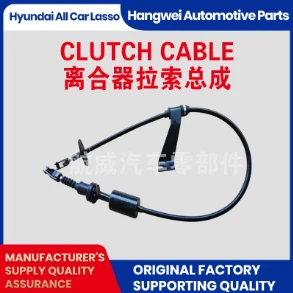go kart throttle linkage
The Essential Role of Throttle Linkage in Go-Kart Racing
Go-kart racing is not just a thrilling hobby for enthusiasts; it's often a gateway into the world of motorsports. One of the critical components that contribute to the performance and responsiveness of a go-kart is the throttle linkage. Understanding its design, function, and maintenance can significantly enhance the racing experience and optimize the performance of the kart.
What is Throttle Linkage?
Throttle linkage in a go-kart refers to the mechanism that connects the throttle pedal to the carburetor. It plays a crucial role in regulating engine power by controlling the flow of air and fuel mixture, which directly correlates with acceleration and speed. Effective throttle linkage ensures that the driver's intentions are reflected in the kart’s performance.
Typically, go-kart throttle linkages consist of a combination of rods, cables, and levers that translate the movement of the throttle pedal into the motion of the throttle plate. This linkage system must be both sensitive and durable since the demands of racing can put strain on these components.
The Importance of Proper Throttle Linkage Scaling
One of the main benefits of having a finely-tuned throttle linkage is improved throttle response. When the linkage is calibrated correctly, the driver can enjoy precise control over the acceleration of the kart. This responsiveness is crucial when navigating tight corners or when quick accelerations are needed to overtake opponents.
Moreover, inadequate or poorly adjusted throttle linkage can lead to several issues, including delayed throttle response, erratic engine performance, and, in worst-case scenarios, complete throttle failure. Such occurrences not only hinder performance but can also pose safety risks on the racetrack.
Different Types of Throttle Linkage Systems
go kart throttle linkage

Go-karts may utilize either a mechanical or cable-operated throttle linkage type. Mechanical systems often feature solid rods and levers that physically connect the throttle pedal to the carburetor or throttle body. These linkages provide a direct and linear response, which some racers prefer for its simplicity and reliability.
On the other hand, cable-operated throttle linkage systems use a flexible cable to connect the throttle pedal to the carburetor. This setup allows for smoother operation and is generally easier to adjust. The flexibility of the cable can absorb some of the shocks and vibrations of racing, providing a more comfortable driving experience.
Installation and Maintenance
Installing or maintaining throttle linkage should be approached with care and precision. DIY enthusiasts should first ensure they have a clear understanding of their go-kart's specific linkage system, as designs can vary widely. Proper installation is critical for ensuring that the throttle linkage operates smoothly. Poorly installed linkages can lead to throttle sticking or lagging responses, which can be hazardous on the track.
Regular maintenance of the throttle linkage involves checking for wear and tear, ensuring all components are securely fastened, and lubricating moving parts to prevent friction. Additionally, drivers should frequently inspect the throttle cable or rods for any signs of damage, such as fraying or kinks, as these can severely affect performance.
Fine-Tuning for Optimal Performance
Many competitive go-kart racers invest time in fine-tuning their throttle linkage systems for optimal performance. This can involve adjusting the length of the throttle cable, changing the mounting points, or modifying the angle of the linkage to achieve the best responsiveness. Each racer may have unique preferences, often determined by their driving style and the specific requirements of the track.
Conclusion
In conclusion, the throttle linkage in a go-kart is an essential component that directly influences the performance and safety of the vehicle. By ensuring a well-functioning throttle linkage system, racers can enjoy a more responsive and controlled driving experience. Proper installation, regular maintenance, and fine-tuning can lead to significant performance gains on the track. Whether you’re a seasoned racer or just starting, understanding and optimizing your go-kart’s throttle linkage can make all the difference in your racing journey.
-
Workings of Clutch Pipe and Hose SystemsNewsJun.04,2025
-
The Inner Workings of Hand Brake Cable SystemsNewsJun.04,2025
-
The Secrets of Throttle and Accelerator CablesNewsJun.04,2025
-
The Hidden Lifeline of Your Transmission Gear Shift CablesNewsJun.04,2025
-
Demystifying Gear Cables and Shift LinkagesNewsJun.04,2025
-
Decoding Clutch Line Systems A Comprehensive GuideNewsJun.04,2025
